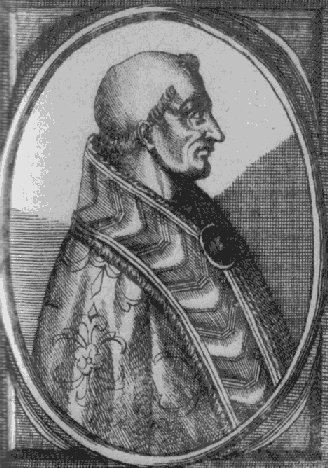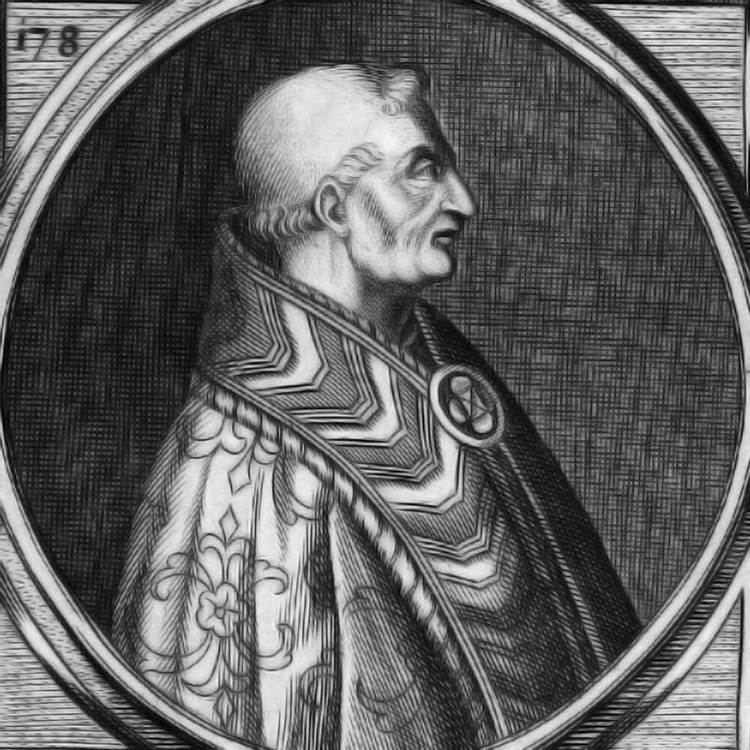Papacy began 25 October 1241 Successor Pope Innocent IV Papacy ended 10 November 1241 Predecessor Pope Gregory IX | Coat of arms Name Pope IV | |
 | ||
Birth name Goffredo da Castiglione
Goffredo Castiglioni Died November 10, 1241, Rome, Italy Previous post San Marco Evangelista al Campidoglio, Rome Similar People Pope Anastasius III, Pope Innocent XII, Pope Innocent VIII, Pope Clement XIII, Otto II - Holy Roman Emperor | ||
Created cardinal September 18, 1227 | ||
What is Pope Celestine IV?, Explain Pope Celestine IV, Define Pope Celestine IV
Pope Celestine IV (Latin: Caelestinus IV; died 10 November 1241), born Goffredo da Castiglione, was Pope from 25 October 1241 to his death on 10 November of the same year.

Born in Milan, Goffredo or Godfrey is often referred to as son of a sister of Pope Urban III, but this claim is without foundation. Nothing is known of his early life until he became chancellor of the church of Milan (perhaps as early as 1219, certainly in 1223–27). Pope Gregory IX made him a cardinal on 18 September 1227 with the diocese and benefice of San Marco, and in 1228–29 sent him as legate in Lombardy and Tuscany, where the cities and communes had generally remained true to the Hohenstaufen emperor, Frederick II. He was dispatched in an attempt to bring these territories around to the papal side, but without success. In 1238 he was made cardinal bishop of Sabina.
The papal election of 1241 that elevated Celestine to the papal chair was held under stringent conditions that hastened his death. The papal curia was disunited over the violent struggle to bring the Emperor and King of Sicily Frederick II to heel. One group of cardinals favored the ambitious schemes of the Gregorian Reform and aimed to humble Frederick as a papal vassal. Frederick, however, controlled as his unwilling guests in Tivoli two cardinals whom he had captured at sea, and in Rome Cardinal Giovanni Colonna was his ally, largely because the curia was in the hands of the Colonna archenemy, the senator Matteo Rosso Orsini. The latter held the consistory immured under his guards in the ramshackle palace of the Septizodium, where rains leaked through the roof of their chamber, mingled with the urine of Orsini's guards on the rooftiles. One of the cardinals fell ill and died.
One group of cardinals, which included Sinibaldo de' Fieschi (soon to be Pope Innocent IV) backed a candidate from the inner circle of Pope Gregory IX expected to pursue the hard line with Frederick II. Another group advocated a moderated middle course, not allies of the Hohenstaufen, but keen to reach an end to the Italian war. Overtures to Frederick II, however, were met with the impossible demand that if they wished the cardinals in his hands to return to Rome, they must elect as Pope Otto of St. Nicholas, an amenable compromise figure. Matteo Orsini's candidate, Romano da Porto, who had persecuted scholars at the University of Paris, was considered unacceptable.
The cardinal bishop of Sabina was finally elected Pope Celestine IV by the required two-thirds majority, seven cardinals out of ten, only on 25 October 1241. He occupied the throne for only seventeen days, his only notable papal act being the timely excommunication of Matteo Rosso Orsini. He died of wear and age on 10 November 1241 before coronation and was buried in St Peter's.
